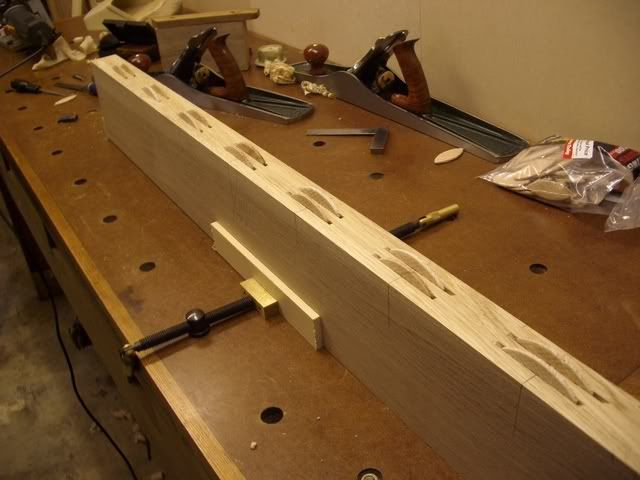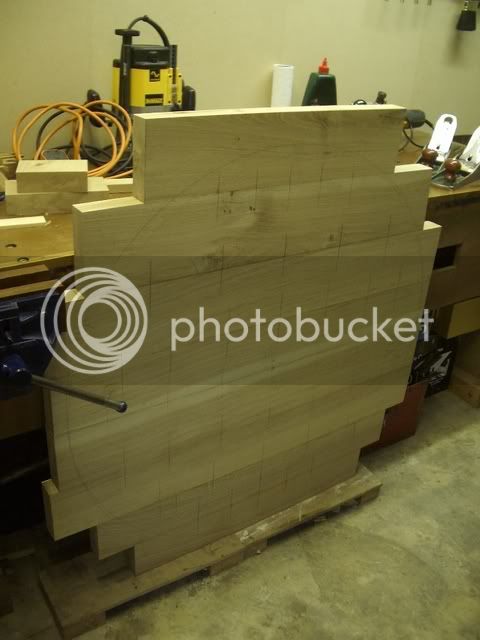gasman
Established Member
A friend wants me to make her a really large farmhouse table - 2100 x 1000 ideally - with tapered legs, an apron and 2 drawers. She wants the table top to be from 3 or maximum 4 boards with no breadboard ends - just 7' planks jointed. She wants 'fruitwood' which I presume means cherry given the required width of boards. I was going to do 100 mm sq legs tapering to 65 at the bottom - with a 200mm overhang at each end, 100 mm overhang at the edges and 50 x 100 aprons
I am concerned several aspects - but particularly about movement in the table top due to the lack of breadboards to keep stability - also how would you joint the 3 boards - with tenons and pegs - or just with dominos / biscuits.
Anyone got any plans or advice for this sort of thing would be great. I have had a go in sketchup and will post this attempt later (on my desktop at home)
Thanks
Mark
I am concerned several aspects - but particularly about movement in the table top due to the lack of breadboards to keep stability - also how would you joint the 3 boards - with tenons and pegs - or just with dominos / biscuits.
Anyone got any plans or advice for this sort of thing would be great. I have had a go in sketchup and will post this attempt later (on my desktop at home)
Thanks
Mark








































